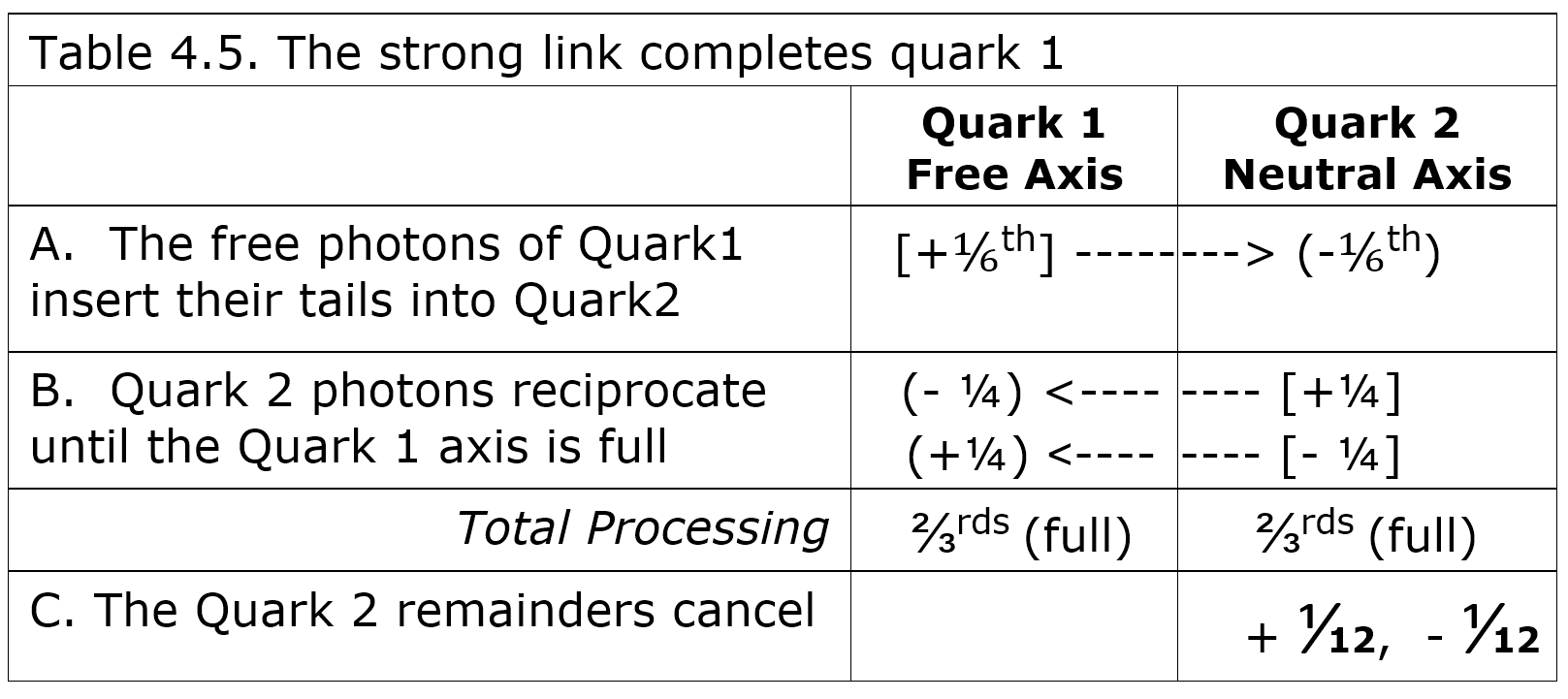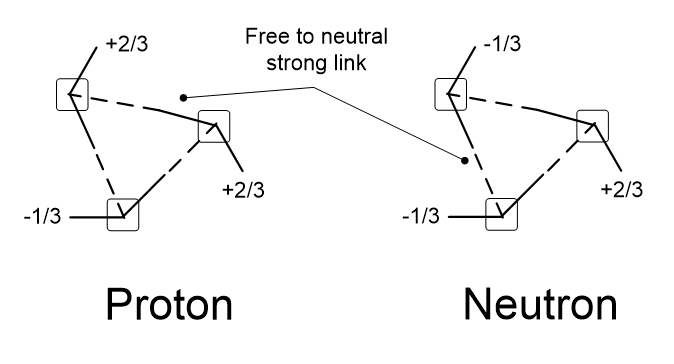
The atomic nucleus, once thought indivisible, is now known to consist of protons and neutrons that in turn are made up of quarks. A proton is two up quarks and a down quark and a neutron is two down quarks and an up, so the odd quark charges add nicely to give a positive proton and a neutral neutron (Table 4.4). In quantum processing terms, could quarks combine to give stable protons and neutrons?

If the free photon “hooks” of one quark insert into the neutral axis of another quark, this gives a sixth of an axis of processing in both quarks (Table 4.5A), where one photon in two adjacent quarks uses all its processing with no remainder. The photons from the second quark’s neutral axis can return the favor until the first quark axis is full (Table 4.5B). Both axes are now complete and the positive and negative processing remaining in the neutral axis still cancels to neutral (Table 4.5C). Quark charge is unaffected because the charge axes aren’t involved so free-neutral photon sharing completes the free axis but the neutral axis is the same. Photon sharing binds quarks and creates the extra processing needed to stabilize the first quark by filling its free axis.

This link completes the first quark but the second quark can also complete its free axis by linking to a third quark that can complete by linking back to the first. Figure 4.13 shows how a triangle structure of quarks lets them share photons so they all become stable. If this is possible, then it will happen sometimes by the quantum law of all action. The result is a proton or neutron depending on the mix, as current physics asserts, but now what binds the quarks isn’t magical particles from nowhere but photon sharing. Quarks then bind to others by sharing photons rather than being “pushed” together.
What then are the gluon “color charges”? Each quark needs a different axis status to link in a triangle so the standard model’s red, blue and green “charges” are quark orientations. A quark as an inert particle needs an agent to change its axis orientation but dynamic processing does this naturally, as every cycle is a new event. Every cycle, photons compete for channels by each trying to occupy any channel it can. If a photon fails because another got there first, it just tries again. There is no predefined plan, just a free-for-all that gives different axis outcomes each time, so all that is needed to change a quark axis orientation is another quantum cycle
To illustrate how photons fill channels, imagine pouring water on a stack of wine glasses. When the water fills one wine glass, the remaining water just flows from it to the next, until every glass is full. There is no need for any central control to “manage” the allocation of water to glasses. Now suppose there is exactly enough water to fill all the glasses, and when this happens the weight makes the system restart, so all the glasses empty and another water pouring cycle begins. In the same way, a quark’s photons fill all the channels of a node plane to trigger a processing restart that repeats the cycle.
The quantum world tries every option until a stable result occurs when all the channels fill to give a node overload. To see matter as an inert substance that must be pushed to change is like thinking something in a video must “push” it to the next frame. Likewise, what “pushes” the world to change is quantum processing not invisible particles. If an electron becomes stable by completing the channels of one axis, three quarks can do the same for a plane by sharing photons in a triangle. Protons and neutrons arise when quarks fill the channels of a node plane, not when invisible agents force them together. The strong force occurs because quarks have a processing excess while electromagnetism occurs because electrons have a processing deficit.